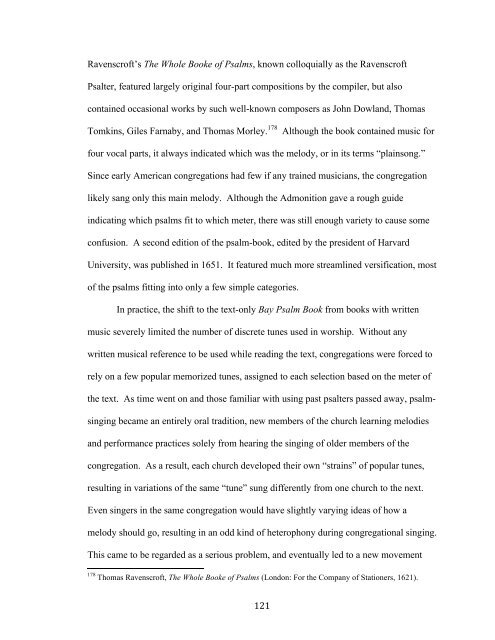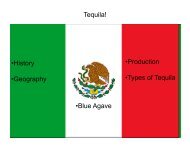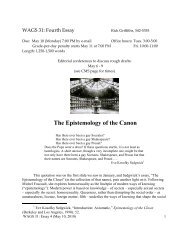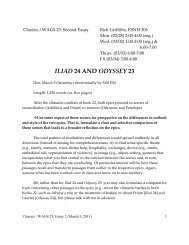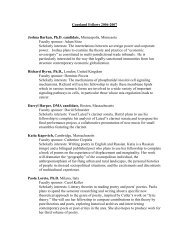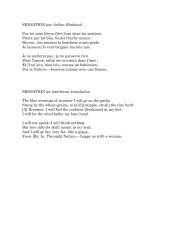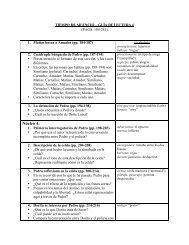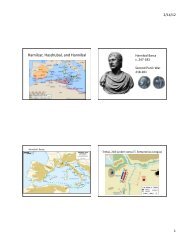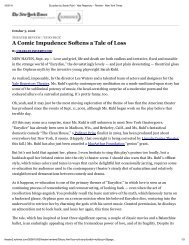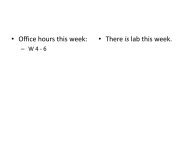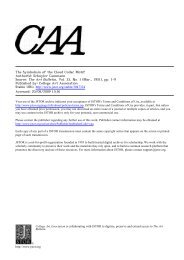Finding Their Voices - Amherst College
Finding Their Voices - Amherst College
Finding Their Voices - Amherst College
Create successful ePaper yourself
Turn your PDF publications into a flip-book with our unique Google optimized e-Paper software.
Ravenscroft’s The Whole Booke of Psalms, known colloquially as the Ravenscroft<br />
Psalter, featured largely original four-part compositions by the compiler, but also<br />
contained occasional works by such well-known composers as John Dowland, Thomas<br />
Tomkins, Giles Farnaby, and Thomas Morley. 178 Although the book contained music for<br />
four vocal parts, it always indicated which was the melody, or in its terms “plainsong.”<br />
Since early American congregations had few if any trained musicians, the congregation<br />
likely sang only this main melody. Although the Admonition gave a rough guide<br />
indicating which psalms fit to which meter, there was still enough variety to cause some<br />
confusion. A second edition of the psalm-book, edited by the president of Harvard<br />
University, was published in 1651. It featured much more streamlined versification, most<br />
of the psalms fitting into only a few simple categories.<br />
In practice, the shift to the text-only Bay Psalm Book from books with written<br />
music severely limited the number of discrete tunes used in worship. Without any<br />
written musical reference to be used while reading the text, congregations were forced to<br />
rely on a few popular memorized tunes, assigned to each selection based on the meter of<br />
the text. As time went on and those familiar with using past psalters passed away, psalmsinging<br />
became an entirely oral tradition, new members of the church learning melodies<br />
and performance practices solely from hearing the singing of older members of the<br />
congregation. As a result, each church developed their own “strains” of popular tunes,<br />
resulting in variations of the same “tune” sung differently from one church to the next.<br />
Even singers in the same congregation would have slightly varying ideas of how a<br />
melody should go, resulting in an odd kind of heterophony during congregational singing.<br />
This came to be regarded as a serious problem, and eventually led to a new movement<br />
!!!!!!!!!!!!!!!!!!!!!!!!!!!!!!!!!!!!!!!!!!!!!!!!!!!!!!!!<br />
178 Thomas Ravenscroft, The Whole Booke of Psalms (London: For the Company of Stationers, 1621).<br />
! 121!


